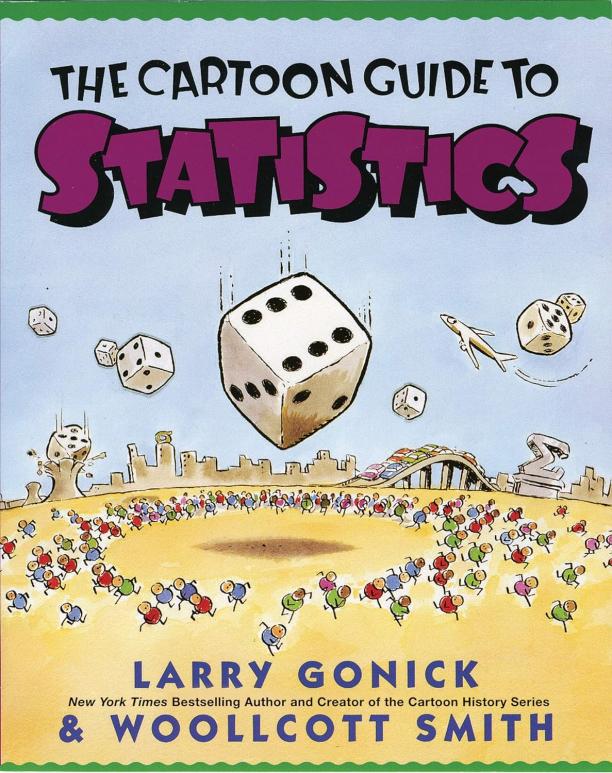Summaries of books about Statistics:

The Book of Why
The New Science of Cause and Effect
Judea Pearl|Dana Mackenzie
The book explores the science of causality, presenting a framework for understanding cause and effect relationships through a tool called causal inference. It delves into the history and principles of causality, discussing how to use statistical data and models to discern the underlying causes of observed phenomena.
See full summary

Statistics For Dummies
Deborah J. Rumsey
The book serves as an introductory guide to statistics, covering fundamental concepts, methods, and techniques for collecting, analyzing, and interpreting data. It includes explanations of statistical tests, probability, distributions, and practical applications, all presented in an accessible and user-friendly manner for beginners.
See full summary

Cartoon Guide to Statistics
Larry Gonick|Woollcott Smith
The book presents the fundamentals of statistics through humorous cartoons and clear explanations, covering topics such as probability, random variables, binomial distributions, sampling, hypothesis testing, and regression analysis. It aims to make the subject accessible and engaging for readers with its visual storytelling approach to complex statistical concepts.
See full summary

The Data Detective
Ten Easy Rules to Make Sense of Statistics
Tim Harford
The book provides a guide to understanding and interpreting statistics and data in everyday life, debunking common misconceptions and biases. It offers ten practical rules for thinking critically about numbers and evidence, helping readers make better-informed decisions.
See full summary

Discovering Statistics Using IBM SPSS Statistics
North American Edition
Andy Field
The book serves as a comprehensive guide to understanding statistics and data analysis through the use of IBM SPSS software, blending humor and a straightforward approach to teach complex statistical concepts and practical application. It includes step-by-step instructions, examples, and exercises for readers to develop their statistical skills and effectively use SPSS for their research projects.
See full summary

Making Numbers Count
The Art and Science of Communicating Numbers
Chip Heath|Karla Starr
The book provides strategies for effectively communicating numerical information by translating complex data into understandable, relatable, and memorable stories. It emphasizes the importance of context, comparisons, and visuals to make statistics and figures resonate with audiences, enhancing their ability to comprehend and retain quantitative information.
See full summary

Mostly Harmless Econometrics
An Empiricist's Companion
Joshua D. Angrist|Jörn-Steffen Pischke
The book provides a practical guide to econometric methods, particularly for researchers conducting empirical work in economics. It emphasizes the use of causal inference and natural experiments in policy evaluation and social science research, offering clear explanations and real-world examples.
See full summary

Bayesian Statistics the Fun Way
Understanding Statistics and Probability with Star Wars, LEGO, and Rubber Ducks
Will Kurt
The book introduces the concepts of Bayesian statistics through engaging and relatable examples, including pop culture references and playful experiments. It covers foundational principles of probability and statistical thinking, making complex ideas accessible to readers with various levels of mathematical background.
See full summary

The Secret Life of Pronouns
What Our Words Say About Us
James W. Pennebaker
The book delves into the psychological insights that can be gleaned from the seemingly trivial words we use, such as pronouns, articles, and prepositions. It presents research on how these function words reflect our emotions, social status, and personality traits, revealing the hidden meanings behind our everyday language.
See full summary

Social Physics
How Social Networks Can Make Us Smarter
Alex Pentland
The book explores the concept of "social physics," a data-driven approach to understanding human behavior through patterns in big data derived from social networks. It discusses how this analysis can improve decision-making in various domains, from business to government policy, by harnessing the collective intelligence of social groups.
See full summary